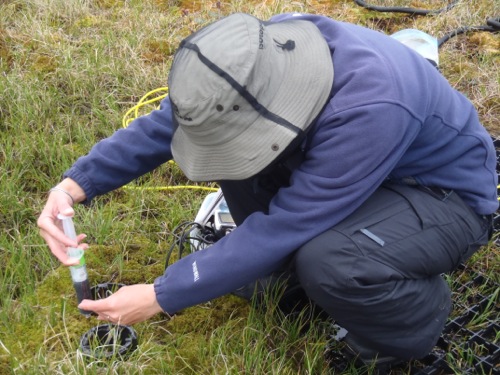
There are small needles for sewing a button back on a shirt, medium sized needles for cross stitching, but perhaps the biggest needles of all are for science!!! Yes, science!!

After much calculation and checking and rechecking of her math work, and even a few phone calls to the lower 48 states, Kim was ready to whip up the two different solutions of electron acceptors needed for treating her soil chambers.

As part of her research study, Kim is studying the reactions of the microbes and the resulting greenhouse gas emissions when she adds an increased amount of a certain chemical already produced by these microorganisms to the soil. And what better way to administer the treatment than with a needle of epic proportions! This is extremely careful work, which Kim fastidiously documents in her science field journal.

As with any variable being added to an experiment, Kim has to compare her results against a control group; in this case, a chamber that simply received injections of deionized water.
Since we're on the topic and because teachers LOVE an excuse to reteach, let's review the difference between a control group and an experimental group. The experimental group is exposed to the conditions of the experiment, in this case the chemical solution of electron acceptors, and the other group, the control group, does not get this solution.
In short, an experimental group is the group in a scientific experiment where the experimental procedure is performed. This group is exposed to the independent variable being tested and the changes are then observed, recorded, and analyzed.
A control group is a group separated from the rest of the experiment where the independent variable being tested cannot influence the results. This isolates the independent variable's effects on the experiment and can help rule out alternate explanations of the experimental results. Controls are extremely useful where the experimental conditions are complex and difficult to isolate. Experiments that use control groups are called controlled experiments.


Comments